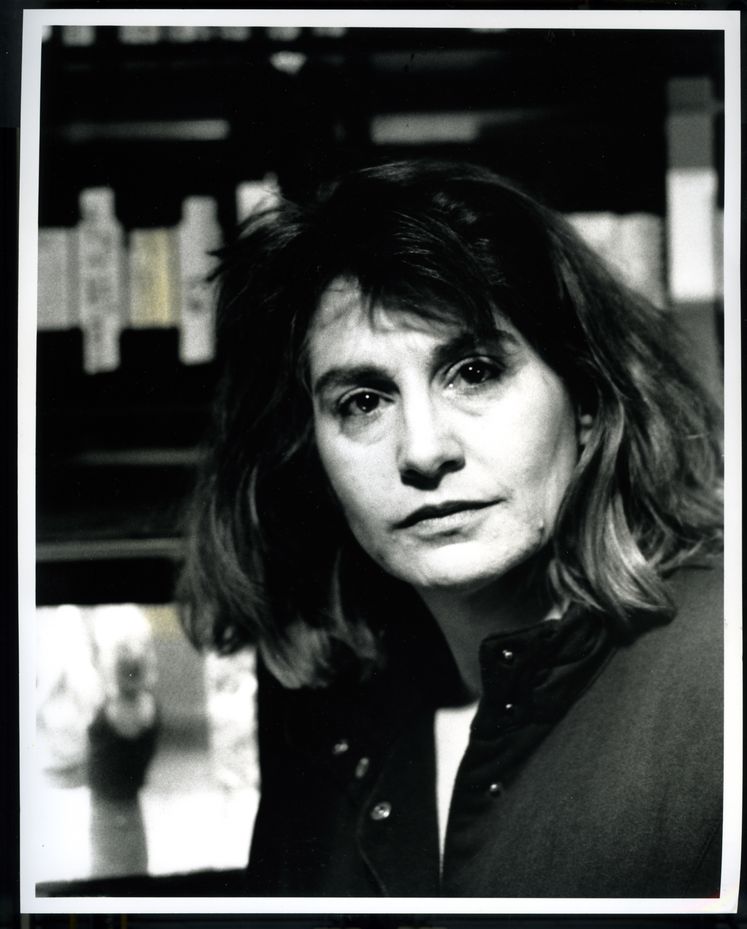 | American Nationality Born in 1946 in new York (United States). Died in 2025 | Biographie Bibliographie Liste expositions |
 | American Nationality Born in 1946 in new York (United States). Died in 2025 | Biographie Bibliographie Liste expositions |
Dara Birnbaum belongs to a generation of artists which, under the influence of Nam June Paik’s works in particular, developed a critical attitude towards television in the 1970s.
After studying architecture and city planning at the Carnegie Institute of Technology in Pittsburgh, Birnbaum graduated from the San Francisco Art Institute in 1973. Returning to New York in 1976, she began working with video at the New School for Social Research.
In her videos and installations, Birnbaum offers a critical denunciation of the mass media’s power to manipulate by undermining the imagery they produce. Her subversive approach draws on the technological possibilities video provides for deconstructing the flow of television programmes (games, series, sports programmes) in order to bring out their superficiality. By exploring and reinterpreting the codes and grammar of commercial television, the artist attempts to reveal the contradictory mechanisms existing within the medium. She thus describes her first works as an ‘attempt to address a few of the basic dichotomies inherent in the medium itself’ [1].
Because television uses the same technology and retransmission tool as video, Birnbaum has taken an interest in the differences and similarities between the experience of television in one’s own home and that of the artist’s appropriation of the images in a public space such as a gallery or museum. Her first exhibition took place in 1977 at the Artist’s Space in New York. Although she was not yet using video, she was already singling out and analysing television images and relationships between the image and the text. One of the first examples of her deconstruction of television imagery is (A) Drift of Politics (1978). The work is composed of static images of two shots taken from an episode of the American sitcom Laverne and Shirley condensed into a 5-minute loop.
One of Birnbaum’s major figures of style is based on the excessive repetition of a characteristic television image. This repetition serves to free the images from the meaning the television context gives them. Technology/ Transformation: Wonder Woman (1978) was made by recycling images from Wonder Woman, a television series which was popular in the United States in the 1970s in order to focus on the conversion of an ordinary woman into one with supernatural powers. Here, Birnbaum has isolated certain sequences in the editing and makes the actrice whirl around in a flood of repetitive, fragmented shots which deconstruct the image and call into question the icon status of media heroes. The insistent repetition of this transformation exhausts the magical effect: the transformation into Wonder Woman becomes a banal, almost ridiculous occurrence.
Birnbaum has also been interested in the rapidity with which popular programmes are absorbed and consumed without being verified or called into question. By slowing down the technological speed and selecting fragment of programmes as in Pop-Pop video: Kokak/Wang, the artist immediately involves viewers in a critical process so that they can no longer adopt a passive or neutral point of view.
Birnbaum has also conceived several installations, such as PM Magazine (1982-1989), a montage of television images, and Break-In Transmission: Tiananmen Square (1990), a work which analyses the role of television in the 1989 protest movement. With these video installations, she gives a spatial dimension to the concepts introduced in her videotapes.
In the mid 1980s, Birnbaum undertook a three-part installation inspired by the Faust legend: Damnation of Faust: Evocation (1983), Damnation of Faust: Will-O’-the-Wisp (1985) and Damnation of Faust: Charming Landscape (1987). The installation, which adapts to the environment where it is presented, is composed of two monitors showing two different videos and a red wall on which the large-format, black-and-white photograph of a young girl is hung.
Birnbaum was also one of the first artists to create ‘video walls’. In 1989, she made Rio Videowall for a shopping centre in Atlanta, Georgia. It is a permanent interactive installation composed of twenty-five monitors located in a busy public plaza. This new set-up for presenting television makes each screen the equivalent of the pixels from which the televised image is constituted.
Priscilia Marques
Translation: Miriam Rosen
[1] Catalogue 60’80’ Attitudes/Concepts/Images. Amsterdam, Stedelijk Museum (supplement), 1982, p. 35.